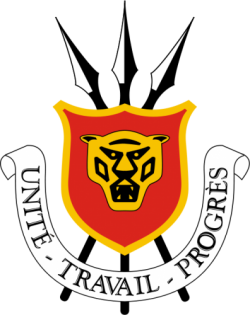A brief introduction to Burundi
Encourage diplomatic efforts to strengthen Burundi’s position in the global community.
Overview
The Republic of Burundi, nestled in the heart of Central and East Africa, is a landlocked country with a diverse landscape, rich cultural heritage, and a unique blend of linguistic influences. This overview explores key facets of Burundi, including its geography, climate, administrative divisions, and vibrant cultural traditions.
Geography
Burundi is strategically located in the Great Rift Valley, where the African Great Lakes region and East Africa converge. Bordered by Rwanda to the north, Tanzania to the east and southeast, and the Democratic Republic of Congo to the west, its southwestern border is adorned by Lake Tanganyika. The political capital is Gitega, while Bujumbura serves as the economic capital and the largest city.
Climate
Situated on the western escarpment of the high African plateau, Burundi experiences a moderate climate due to its generally high elevation. With an average temperature ranging from 20°C in higher parts to 23°C in lower areas, the country benefits from reliable annual rainfall (800 to 1400 mm). Elevation plays a crucial role in moderating the tropical character of Burundi, contributing to cooler temperatures. There’s a short, dry season from May to August.
Administrative Divisions
Burundi is divided into seventeen provinces, each playing a significant role in the country’s administrative framework. These provinces include Gitega, Cankuzo, Rutana, Ruyigi, Karuzi, Kayanza, Kirundo, Muyinga, Ngozi, Bururi, Makamba, Rumonge, Bubanza, Bujumbura, Cibitoke, Muramvya, and Mwaro.
Culture
Burundi boasts a rich cultural tapestry, deeply rooted in local traditions and influenced by neighboring countries. The people share a sense of linguistic homogeneity, with Kirundi as the national language. French holds a prominent position as the first foreign language, while English and Swahili are gaining importance.
Cultural Expressions:
Traditional Drumming: The sacred drums, played by the Abatimbo, hold immense cultural significance. The Royal Drummers of Burundi, renowned for their performances, showcase the karyenda, amashako, ibishikizo, and inkiranya drums.
Dance: The Intore dance, a warrior dance performed in lines with weapons, is a symbol of Burundian heritage. Often associated with celebrations, it was recognized by UNESCO in 2014.
Craftsmanship: Burundi’s artisans display creativity in age-old crafts such as basketry, pottery, sculpture, and painting, reflecting the nation’s traditions and cultural heritage.
Language: Linguistic homogeneity is a unique aspect, with Kirundi as the national language, complemented by French, English, and Swahili.
Storytelling: The elders pass down stories, legends, and poetry during social gatherings, preserving the cultural narratives of the past.
Visit or Call
Plot No. 35390, Air Force Road, Mass Media,
Lusaka, Zambia
Phone: +260 211 258 810
Phone: +260 211 258 811
Monday – Thursday, 8:00hrs – 17:00 hours
